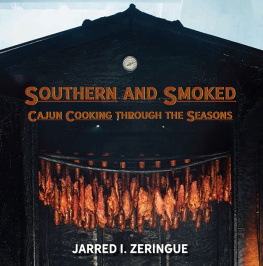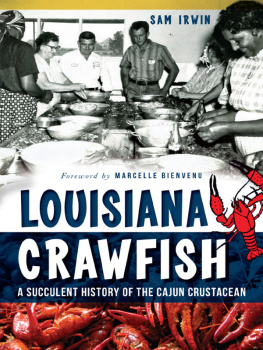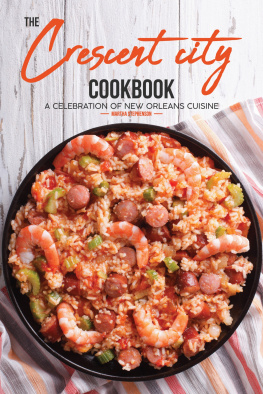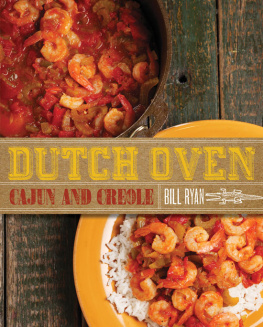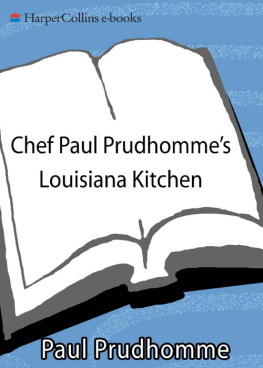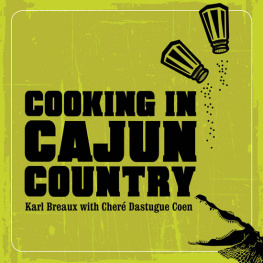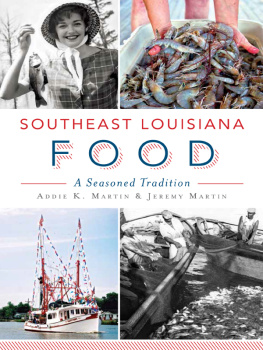LOUISIANA RAMBLES
LOUISIANA RAMBLES
EXPLORING AMERICAS CAJUN AND CREOLE HEARTLAND
IAN MCNULTY


www.upress.state.ms.us
The University Press of Mississippi is a member of
the Association of American University Presses.
All photographs are by Ian McNulty.
Copyright 2011 by University Press of Mississippi
All rights reserved
Manufactured in the United States of America
First printing 2011
Library of Congress Cataloging-in-Publication Data
McNulty, Ian, 1973
Louisiana rambles : exploring Americas Cajun and
Creole heartland / Ian McNulty.
p. cm.
Includes bibliographical references and index.
ISBN 978-1-60473-945-9 (cloth : alk. paper) ISBN 978
1-60473-946-6 (pbk. : alk. paper) ISBN 978-1-60473
947-3 (ebook) 1. LouisianaDescription and travel.
2. LouisianaSocial life and customs. 3. Louisiana
Guidebooks. 4. Gulf Coast (La.)Description and
travel. 5. Gulf Coast (La.)Social life and customs. 6.
Gulf Coast (La.)Guidebooks. 7. Mississippi River Delta
(La.)Description and travel. 8. Mississippi River Delta
(La.)Social life and customs. 9. Mississippi River Delta
(La.)Guidebooks. 10. CajunsSocial life and customs.
I. Title.
F369.M44 2011
976.3dc22 2010029867
British Library Cataloging-in-Publication Data available
FOR ANTONIA AND
ALL OUR RAMBLES AHEAD
CONTENTS
Rambles and Revelations
Paddling New Orleanss Wild Border by Day and Night
River Levee Bonfires and Papa Noel
Swamp Tours and Louisianas Favorite Dinosaur
Plantation Tours and the Slavery Legacy
A Culture That Persists Behind Bars
Oil, Oil Everywhere and the Future of the Coast
Sausage Road Trips and a Kitchen Divided
Tubing Your Time Away on the Amite River
Casting Off from Grand Isle
Stalking the Halls of Power in Baton Rouge
Riverine Pub Crawls Around Livingston Parish
Chasing Bounty Inland and Offshore
The Worlds Longest Village Street and Houma Headquarters
Acadian Journeys and Jam Sessions
Of Jockeys, Knights, and Racetracks in the Rough
Creole Musics Dancehalls and Dynasties
Exploring the Salt Domes and the Old Spanish Trail Through Teche Country
Dusty Dance Floors and Creole Trail Rides
Over the Top in an Atchafalaya Levee Town
Music on a Louisiana Saturday Morning
Eating Around Acadiana
Mardi Gras on the Cajun Prairie
Cameron Parish and Louisianas Outback
Notes on Trips and Travel Resources
INTRODUCTION
Rambles and Revelations
When I first moved to New Orleans in 1999 I fell into an instant, headlong crush with the city. It was an easy love, one that over time would prove its substance and resilience through adversity but nevertheless one that registered at first sight. My relationship with Louisiana was much slower to start. It was one that took years to burn in, one that revealed itself in stages, and one that opened doors to beauty and experience that, at least in the beginning, I didnt even realize were waiting right in front of me.
I was raised in Rhode Island, a place I adore with all my heart. But a few years after I finished college and returned home, the romantic travel bug attached itself to my imagination. The notion of New Orleans loomed large as a place apart from what Id known, and I fantasized about it as a foreign city within my own country. From afar it seemed just that exotic and colorful, and the first impressions I gleaned during a few weekend visits as a tourist were no less enthralling. I found a city where people spoke English and watched the same television programs but where the local culture boomed out with unbridled Caribbean flair set amid a framework of distilled Old World otherness. I found a mysterious place, decadent but also drenched with traditions that I didnt know and that I couldnt take for granted. New Orleans seemed like the antidote for the normality of home, and I wanted to experience it while I was young and had no commitments tying me to one place or another.
So at age twenty-five I decided to embark on a brief dalliance in Dixieland, as I then envisioned it. I asked my friends, my family, and even my employer not to change too much in my absence, because I was sure Id return home in a year or so with plenty of wild French Quarter tales to blow away my Providence friends when I resumed New England life.

Heading out in south Louisiana.
Once I began exploring New Orleans, however, the clichd expectations and stereotypes Id held about the city began to fall away, replaced by the infinitely more interesting, complex, sometimes infuriating but ultimately rewarding realities. As I delved further, logged more time, met more people, and discovered more layers, my life here grew richer and the prospect of ever leaving grew increasingly remote.
Even as I got to know my new home, the whole place remained different and intriguing to me. I had never experienced a community as powerfully influenced by black culture and politics. Nor had I ever lived in a place with such specific vocabulary. I learned that counties in Louisiana are called parishes, so that I lived in Orleans Parish as well as the city of New Orleans. Restaurant menus were filled with words from the French culinary canoncourtbouillon, sauce bordelaise, remouladesignifying Louisiana preparations no Frenchmen would recognize on his plate. And I soon began my first struggles to understand the word Creole, with its myriad and seemingly contradictory local applications. So much of what I experienced here came through a cultural filter that was new and fascinating, and one that was unique to this peculiar place.
As if there were any question about moving elsewhere someday, I would later meet and fall in love with my wife, Antonia Keller. She is a New Orleans girl with a huge New Orleans family. For a transplant to this city, marrying such a girl is generally viewed as the demographic equivalent of Cortez burning his boats on the New World coast. There is no turning back.

I now have friends who grew up in New Orleans hearing from their parents that they did not live in the South, but rather that they were citizens of the northernmost port of the Caribbean. Even during my nascent explorations I felt I could relate to this attitude. I began to look at New Orleans as an island city-state. The core of the city is surrounded on all sides by fortified floodwalls and ringed by river, lake, and canal, or by swamps that are passable only on causeways. With the exception of the tiny, old two-lane River Road hugging the Mississippi River levee, the city is accessed entirely by a series of bridges. There is a definite sense of departure and arrival when people here come and go by land, though I found that I myself rarely left. For years, I was content to sit within the citys walls and moats and explore its beguiling ways. In a sense that was a confirmation of my growing New Orleans identity, because one of the accurate stereotypes about people from New Orleans is how rarely they feel compelled to leave home.
I had a hazy awareness of south Louisiana outside of New Orleans, and periodically I would take a road trip down the interstate to some specific destination in Cajun country. But as much as New Orleans seemed to stand apart from the rest of America, it also felt distinct from the rest of Louisiana. I had only the sketchiest idea of what made up south Louisiana between the highways. It was as if I lived in Vatican City but couldnt find my way around Rome.
Next page

